Digital Marketing Glossary & FAQ
for Business Owners
- Home >
- Digital Marketing Glossary & FAQ
Real-World Answers with No Marketing Jargon.
If you're a business owner, you know digital marketing is essential. But the terminology can feel like a foreign language. Here’s a straightforward glossary covering the terms you’ll hear most often, explained in easy-to-understand paragraphs including definitions, benefits, drawbacks, and real-world examples.
We've also included the most frequently asked questions we receive about digital marketing.
Glossary of Terms
A/B Testing
Testing two different versions of something (like a headline, landing page, or email) to see which one performs better. This helps businesses make data-driven decisions and improve results. For example, running two versions of a landing page to see which one gets more sign-ups.
AEO (Answer Engine Optimization)
Answer Engine Optimization (AEO) is the process of making your content easy for Google’s AI and voice assistants to feature in direct answers. The benefit of AEO is increased visibility and authority, placing your brand in front of potential customers before they even click a link. If ignored, competitors’ content gets featured instead, leaving you invisible in AI-driven searches. For example, a local bakery that writes a blog post answering, “What’s the best gluten-free bread recipe?” might find its content featured directly in search results and voice assistant answers, bringing in more customers.
AI Search
AI Search refers to the use of artificial intelligence to deliver smarter, faster search results across platforms like Google and ChatGPT. The benefit is better targeting and content discovery. Ignoring AI Search optimization means your content may not show up in the next wave of search tools. For example, optimizing for conversational queries can help your content get picked up by voice assistants or AI chatbots.
Anchor Text
The clickable words in a hyperlink. Search engines use anchor text to understand what the linked page is about. For example, in the sentence “Check out our SEO tips,” the words “SEO tips” might link to a blog post.
API (Application Programming Interface)
An API allows different software applications to communicate with each other. In marketing, APIs are often used to integrate platforms like CRMs, ad tools, or analytics. The benefit is automation and seamless data syncing. Ignoring APIs can lead to manual work, data silos, and errors. For example, using an API to connect your CRM to your email marketing platform ensures all contacts are always up to date.
Authority Score
Authority Score is a metric used by SEO tools to rate the credibility and influence of your website. The benefit is a better understanding of how search engines view your site. Ignoring this score can lead to unintentional penalties or missed SEO opportunities. For instance, building high-quality backlinks can boost your authority score and improve rankings.
Backlinks
Backlinks are links from other websites pointing to yours, acting as online referrals. The benefit of building backlinks is a boost in SEO authority, helping your site rank higher in search results. Ignoring backlinks can result in lower rankings and less traffic, as search engines may not see your site as trustworthy. A real-world example would be a popular food blogger linking to your restaurant’s website, which can drive more visitors and improve your Google ranking.
Bounce Rate
The percentage of visitors who leave your site after viewing just one page. A high bounce rate may mean your content isn’t relevant or engaging. For example, if 100 people visit your homepage and 80 leave without clicking anything, your bounce rate is 80%.
CMS (Content Management System)
A Content Management System (CMS) is a platform that allows you to manage your website easily without coding. This saves time and cost by letting you make updates yourself. If you ignore using a CMS, you'll depend on developers for even small changes, which increases costs and delays. For instance, updating your café’s menu on Craft CMS without needing to call a web developer is a practical use of a CMS.
Conversion
A conversion is any meaningful action a user takes on your website, like filling out a form, making a purchase, or signing up for a newsletter. The benefit is that conversions directly tie your marketing to revenue. Ignoring conversion goals means you're spending money on traffic without knowing if it’s actually working. For example, if 100 people visit your online store and 10 make a purchase, that’s a 10% conversion rate.
CPA (Cost Per Acquisition)
How much it costs to get someone to take a specific action, like making a purchase or signing up. It helps measure your return on ad spend. For example, if you spend $500 and get 10 customers, your CPA is $50.
CPC (Cost Per Click)
The amount you pay every time someone clicks your online ad. It helps you measure how cost-effective your ads are. For example, if you spend $100 on ads and get 50 clicks, your CPC is $2.
CPM (Cost Per Mille)
The cost to show your ad 1,000 times. This is useful when you're focused on getting your brand seen, rather than clicked. For example, if a display ad campaign costs $20 for 1,000 views, your CPM is $20.
CRM (Customer Relationship Management)
CRM software helps businesses manage relationships and interactions with current and potential customers. The benefit is more efficient communication and personalized marketing. Ignoring CRM tools can lead to missed follow-ups and lost sales. For example, using a CRM like HubSpot allows a business to send targeted emails based on customer behavior.
CRO (Conversion Rate Optimization)
Conversion Rate Optimization (CRO) involves adjusting your site to convert visitors into customers. The benefit is higher sales without additional advertising spend. Ignoring CRO means you could have high website traffic but few actual sales or leads. A simple example would be changing a service booking button from “Learn More” to “Book Now,” which increases appointments by 20%.
CTA (Call to Action)
A CTA is a prompt that encourages your audience to take a specific next step—like clicking a button, signing up, or making a purchase. The benefit of a strong CTA is increased conversions and customer engagement. Ignoring CTAs means your audience may scro
Engagement Rate
Engagement Rate measures how actively people interact with your content—likes, shares, comments, etc. The benefit is it tells you what content actually resonates. Ignoring engagement rate means missing valuable insights about your audience. For instance, a video that gets lots of shares probably deserves a follow-up or boost.
Featured Snippets
Featured Snippets are quick answers from your website shown at the top of Google search results. This prime visibility increases click-through rates and establishes your business as an expert. Ignoring featured snippets means competitors could win this top spot. For example, if your pet grooming business’s article appears first for “How often should I bathe my dog?” it can significantly boost traffic and authority.
GEO (Generative Engine Optimization)
Generative Engine Optimization (GEO) ensures that AI tools like ChatGPT recommend your business when people ask questions. The benefit is staying relevant in AI-driven discovery, an increasingly important channel. Ignoring GEO means missing out on new customer acquisition through AI search. For example, a yoga studio optimized for GEO might be mentioned in AI-generated suggestions for “beginner yoga classes near me.”
Google My Business (GMB)
Google My Business is a free tool that lets you manage how your business appears in Google Search and Maps. The benefit is greater local visibility and more control over your online presence. Ignoring GMB can result in lost local customers and inaccurate business listings. For example, a coffee shop with an optimized GMB listing gets more foot traffic from people searching “coffee near me.”
Impressions
Impressions count how often your content is shown to people, regardless of whether they click. The benefit is it helps measure brand visibility. Ignoring impressions can mean overlooking early indicators of reach. For example, a social media post with high impressions but low engagement might need a stronger call-to-action.
KPI (Key Performance Indicator)
A KPI is a measurable value that indicates how well a campaign or business activity is performing. The benefit of KPIs is that they keep your strategy data-driven and goal-focused. Ignoring KPIs can lead to wasted marketing spend with no real insight into performance. For example, tracking the open rate of your email campaigns tells you whether your messaging is working.
Lead
A lead is any person or organization that has shown interest in your product or service. This interest might come from actions like filling out a form, downloading content, or subscribing to your emails. The benefit of identifying leads is that it helps you focus marketing and sales efforts on people most likely to become customers. For example, someone who submits their contact info on your “Get in Touch” page is a lead.
MarTech (Marketing Technology)
MarTech is the collection of tools used for smarter marketing decisions and automation. The benefit of MarTech is making data-driven decisions and automating repetitive tasks, saving time and resources. Ignoring MarTech leads to inefficient marketing efforts, wasted ad spend, and poor performance tracking. Using tools like Google Analytics and Mailchimp together to monitor visits and send emails is a common example.
Meta Tags
Meta tags are snippets of code in your site’s HTML that help search engines understand your page’s content. They include the title tag and meta description. The benefit is better SEO and higher click-through rates. Ignoring meta tags can result in irrelevant or confusing search result previews. For instance, writing a compelling meta description can entice users to click on your site in Google.
MQL (Marketing Qualified Lead)
A lead that has shown interest in your product or service through marketing efforts but isn’t quite ready to buy. These leads typically download content, subscribe to emails, or engage with your site. The benefit is prioritizing leads more likely to convert with some nurturing. For example, someone who downloads an eBook on your site is an MQL.
Organic Traffic
Organic Traffic refers to visitors who find your site through unpaid search results. The benefit is long-term, cost-effective website visibility. Ignoring strategies to grow organic traffic means relying on paid ads, which can get expensive. For example,
Pillar & Cluster Model
The Pillar & Cluster Model organizes website content like a family tree, with main pages linking to sub-pages. This improves SEO and user experience. Ignoring this structure can result in a confusing website, lower rankings, and frustrated visitors. A real-world example is a renovation company’s “Kitchen Remodeling” page linking to related sub-pages about “Countertops,” “Cabinets,” and “Lighting.”
ROAS (Return on Ad Spend)
A measure of how much revenue you earn for every dollar you spend on ads. It helps assess ad performance. For example, if you spend $1,000 on ads and earn $4,000 in sales, your ROAS is 4:1.
ROI (Return on Investment)
A calculation that shows how much profit you made from your marketing spend. It’s one of the best ways to measure campaign success. For example, if you spent $500 and made $1,500, your ROI is 200%.
Schema Markup
Schema Markup is special coding that helps Google understand your content better. This enhances your search appearance, leading to higher click-through rates. Ignoring schema markup means missing rich search opportunities like events or FAQs. For example, your event planning website might use schema markup so Google displays your upcoming events with dates and locations in search results.
SEO (Search Engine Optimization)
Search Engine Optimization (SEO) is about making your site rank higher in search results. The benefit is consistent, high-quality traffic without paying for ads. Ignoring SEO means relying on costly advertisements for visibility. For instance, a plumbing service that shows up first for “emergency plumber in Austin” enjoys steady business from organic search traffic.
SERP (Search Engine Results Page)
The Search Engine Results Page (SERP) is the list of links you see when you Google something. Being higher on the SERP means more clicks and customers. Ignoring SERP strategies reduces leads and sales. For example, a bakery ranking third for “best cupcakes in Seattle” benefits from increased customer interest and orders.
Sitemap
A sitemap is a file that outlines all the pages on your website, making it easier for search engines to crawl and index your content. The benefit is improved SEO and discoverability. Ignoring sitemaps can result in lower visibility and missed search engine rankings. For instance, submitting your sitemap to Google Search Console helps get your new content indexed faster.
SOV (Share of Voice)
Share of Voice (SOV) refers to your share of visibility online compared to competitors. A higher SOV means a stronger market presence. Ignoring SOV allows competitors to overshadow your brand. For instance, if your cleaning service dominates search results for “eco-friendly home cleaning,” it strengthens your brand’s authority and attracts more clients.
SQL (Sales Qualified Lead)
A lead that has been vetted by marketing and is ready to be contacted by sales. These leads show strong buying intent, like requesting a demo or pricing. The benefit is helping sales teams focus their time on high-potential deals. For example, a user who fills out a “Request a Quote” form is an SQL.
Technical SEO
Technical SEO involves backend website optimizations like improving site speed and making sure your site is mobile-friendly. The benefit is better rankings and user experience. Ignoring technical SEO can lead to a slow, penalized site with lost traffic. For example, ensuring your website loads quickly and looks great on mobile devices helps maintain your ranking and customer satisfaction.
FAQs About Digital Marketing Agencies
Thinking about working with a digital marketing agency but not sure where to start? Here are some of the most common questions people ask about agencies like Digital Rebel Marketing - and our answers to help you decide if we’re the right fit for your business.
We help businesses grow by improving their online presence and connecting them with their ideal audience. That includes services like website design, SEO, social media marketing, content creation, paid ads, email marketing, and more. Think of us as your one-stop shop for all things digital marketing.
Marketing takes time, expertise, and the right tools. When you work with an agency, you get a team of specialists who focus 100% on delivering results - so you can focus on running your business. Plus, we bring fresh ideas and proven strategies to help you stand out.
If you want to grow your online presence, attract more leads, or improve your ROI but don’t have the time or expertise to do it all yourself, an agency is a great option. We’ll tailor our approach to fit your goals, budget, and industry.
We partner with B2B professional services, SaaS companies, niche consultancies, and creative agencies—anyone looking to scale beyond local word-of-mouth with smarter systems.
Foundational projects (like website builds, HubSpot setup, or full-funnel content systems) typically range from $3K – $10K+. This is where we lay the strategic and technical groundwork for long-term growth. These differ from ad hoc or one-off tasks by focusing on scalable systems that support your entire marketing operation. Monthly retainers are tailored to how aggressive you want be with your growth goals.
We focus on the metrics that matter most to your business, like:
- Increased website traffic.
- Higher lead conversion rates.
- Growth in sales or revenue.
- Improved customer engagement.
We track everything and provide regular reports so you can see exactly how your marketing is performing.
Absolutely! You’re the expert on your business, and we’re here to amplify your vision. We’ll collaborate with you every step of the way to make sure your brand voice, messaging, and goals are reflected in everything we do.
Long-term partnerships are our priority, but we’re open to the right short-term project—especially if it's the start of something bigger. If you’re looking for a quick win with long-term vision, we’ll show up. But if it’s a one-and-done with no interest in scaling or strategy? We’re not your crew.
It’s simple! Just reach out to us, and we’ll schedule a free consultation to talk about your goals and how we can help. From there, we’ll build a customized plan to grow your business online.
Marketing Strategies & Perspectives
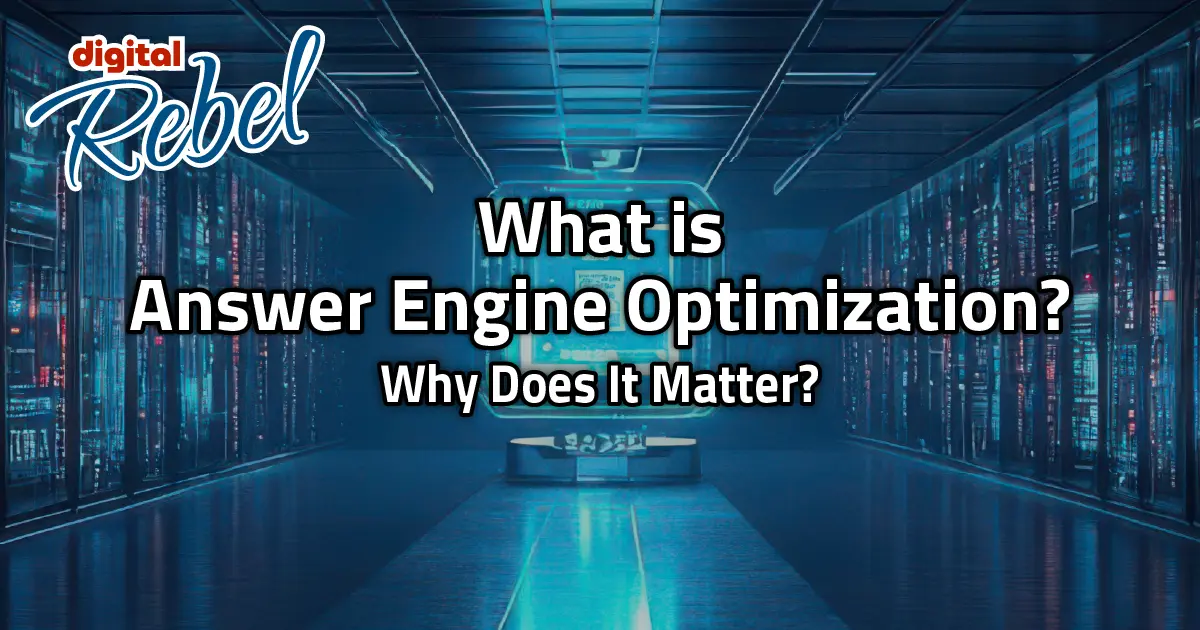
What is Answer Engine Optimization?
Discover what Answer Engine Optimization (AEO) is and why it's essential for staying visible in AI-driven search results.
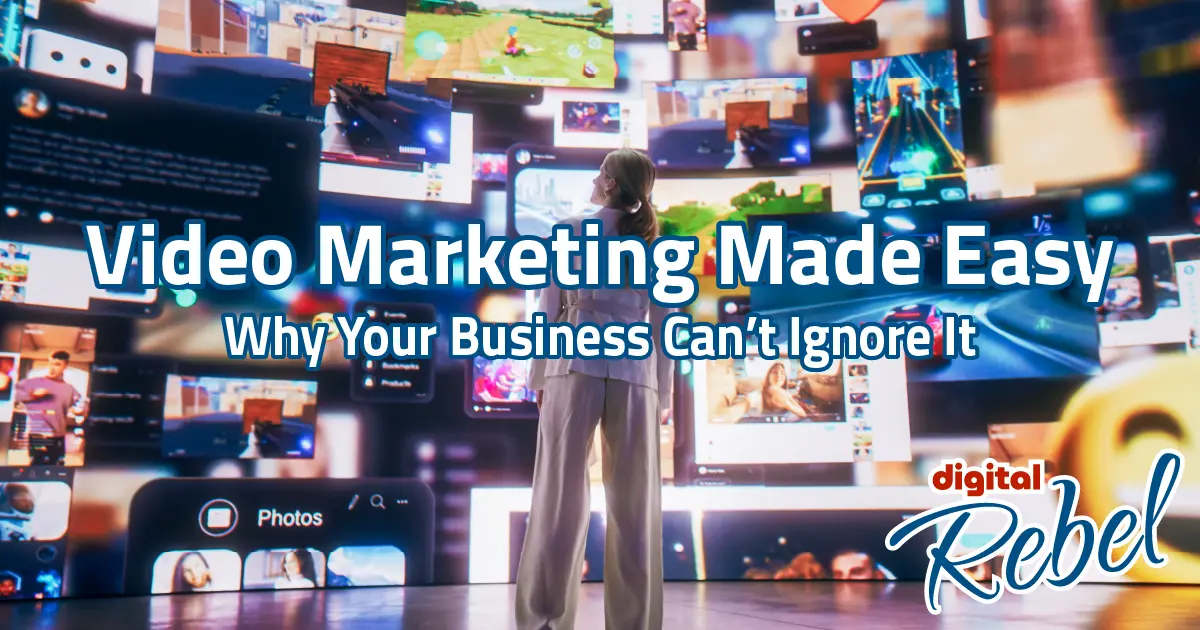
Easy Video Marketing for Small Businesses
Think video marketing is too hard or expensive? Learn how small businesses can create engaging videos on a budget and connect with their audience.

Hiring a Friend to Build Your Website?
Hiring a friend or relative for your website may save money, but lack of expertise, SEO, and support can hurt your business in the long run.
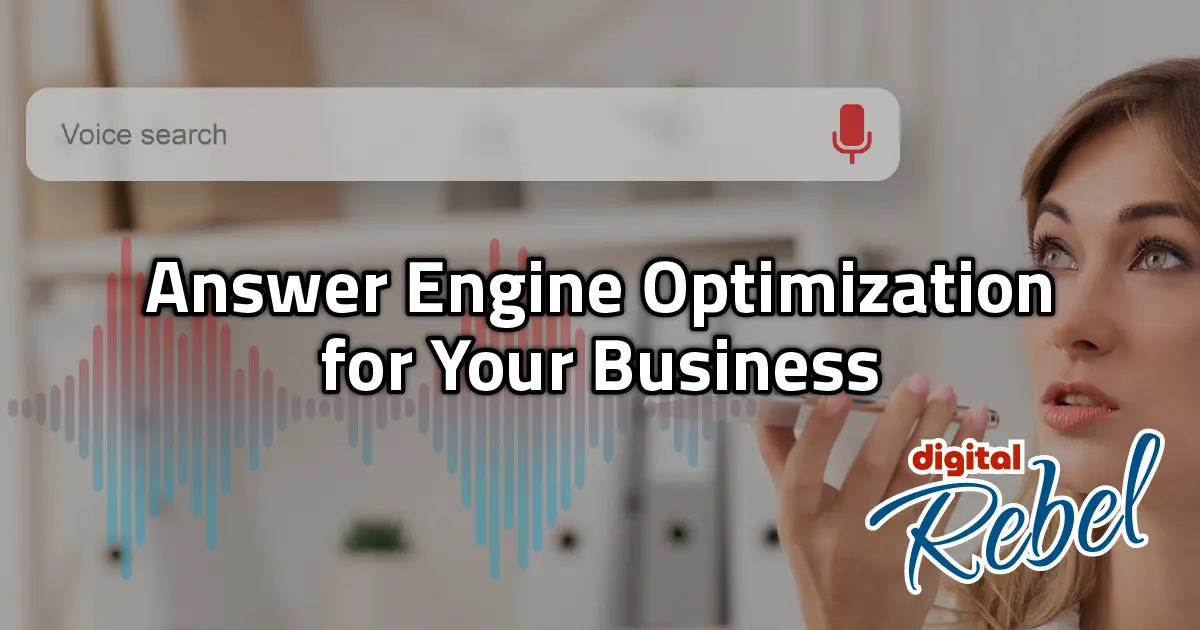
Answer Engine Optimization for Your Business
Learn how Answer Engine Optimization (AEO) drives traffic, enhances visibility, and gives your business a competitive edge.
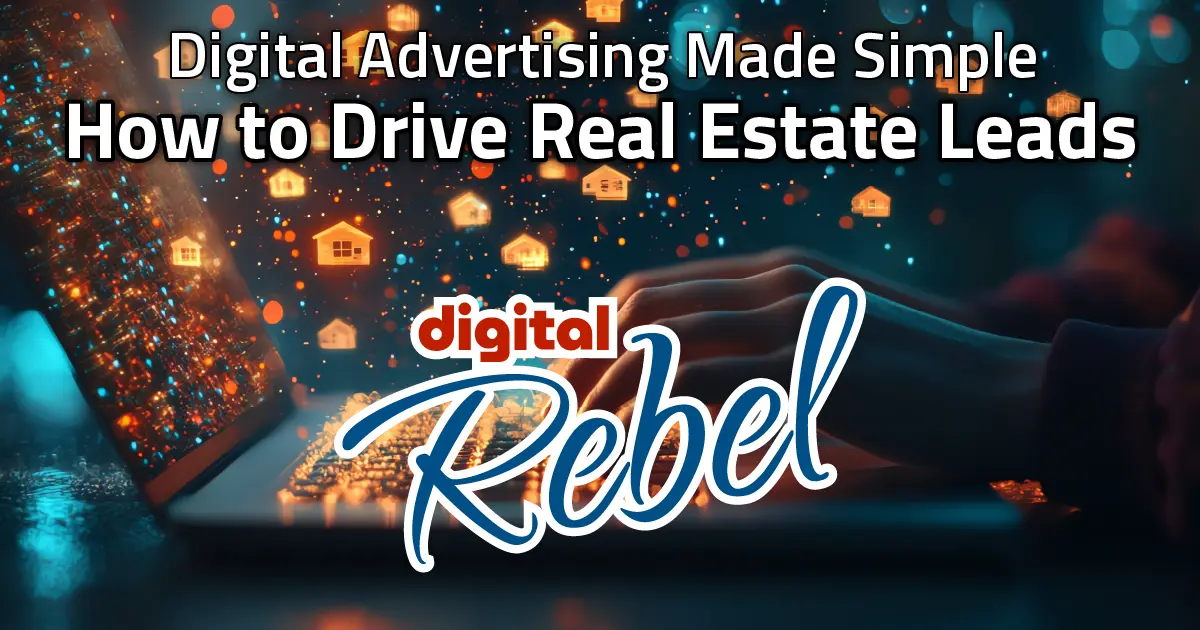
Digital Advertising Drive Real Estate Leads
Part 3 of 7: How to use digital advertising to grow your real estate brand. Explore Google and social media ads, re-targeting, and tips to attract leads.
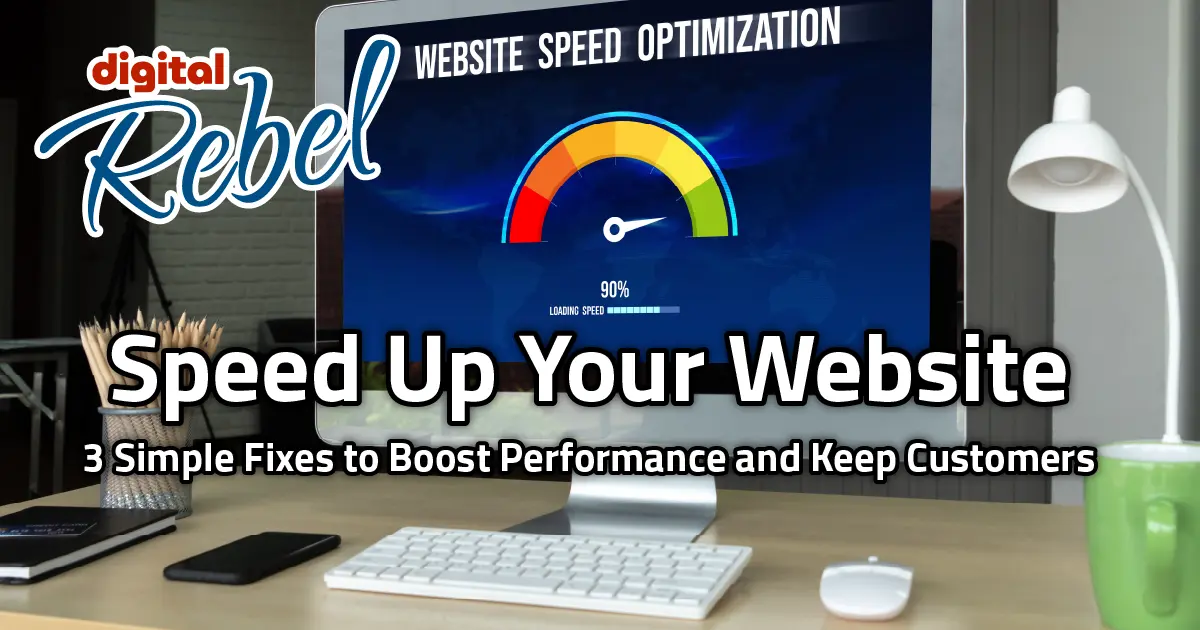
Speed Up Your Website
Slow website? Learn 3 simple fixes to improve speed, boost performance, and keep visitors from clicking away. A faster site means better business results.